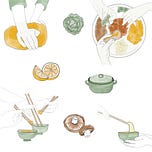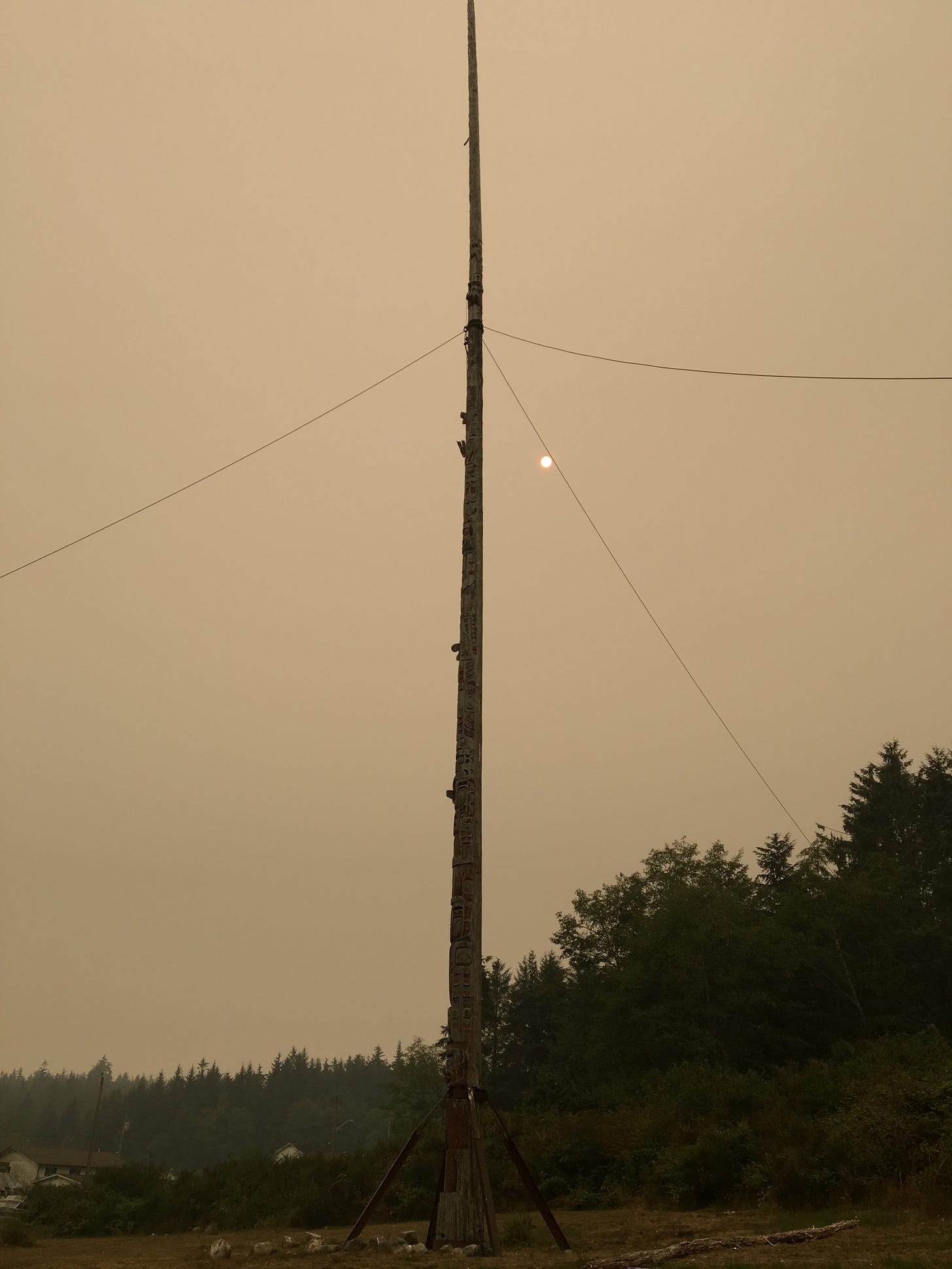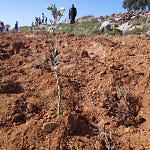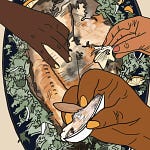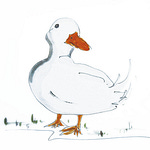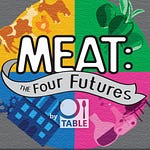Listen to this podcast now in the player above, or visit Feminist Food Stories on Apple or Google Podcasts.
We’re concluding our SEA issue with a podcast episode about a beautiful and beguiling creature found under the waves: orca whales. Sighting an orca from the deck of a BC Ferries ship — gesturing to your family to come quick with smudges of leftover Triple O’s sauce from an over-priced White Spot burger on your chin — is a quintessentially West Coast experience. In the depths of my homesickness for the land often referred to as British Colombia, my imagination always conjures kaleidoscopic blue-and-green images: firs and spruce and hemlock carpeting land that rises out of water of the deepest blue you’ve ever seen. The splice of a black dorsal fin reminds me there is much in this world I will never fully understand.
I know that with each passing year, these still-frames are becoming more of a fantasy. These days British Colombia burns, brutally, for most of the summer; the vibrant Pacific colours of my childhood wash out to greyscale. The province was burning in the summer of 2018 when I first met Troy Bright, a self-taught orca researcher, on the beach at Bere Point, near Sointula on Malcolm Island. I wasn’t having a great trip; my asthma was acting up and my eyes wouldn’t stop watering. We saw the famous Kwakwaka’wakw totem poles of Alert Bay under a red sun that bled feebly into the noxious haze; in such a sparsely inhabited and remote corner of Vancouver Island, I felt strangely claustrophobic.
Meeting Troy provided a much-needed distraction from the snowballing climate grief. We happened to walk by his camp on the beach, where he tracks the Northern Resident orcas who mysteriously come to rub themselves on the bay’s smooth stones. Here was someone whose life work was driven by care; he knew the whales so well he could recognize each one by ear using his hydrophone. For me, who at age five watched Free Willy on repeat and told anyone who would listen that I wanted to be a marine biologist, meeting him was a window into a world that had long enraptured me. I pitched an article about his work to a local magazine, giving me the chance to speak to him in more detail a few months later over the phone.
Five years on, it’s been a joy to reconnect with Troy for a podcast for Feminist Food Journal, this time with a specific focus on gender and food. In our interview, he shares his knowledge of orcas’ rich matriarchal societies, their unique food cultures, and how our human food systems are jeopardizing their way of life. The danger originating from human food choices includes the over-extraction of salmon, a key food source for orcas which Indigenous nations managed sustainably for thousands of years before colonization. After my conversation with Troy, I take a look at the links between the historical treatment of Indigenous women in the salmon canning industry and high levels of food insecurity among Indigenous and racialized women in British Colombia today. In a nutshell, this podcast seeks to make connections: connections between human and non-human animals, dynamics of gender and culture across species, and patterns of food insecurity in the water and on land, arguing that in many ways, we are orcas, and orcas are us.
Coincidentally, last week, the New York Times Magazine featured a long-form story by Ferris Jabr about Hvaldimir, a formerly captive beluga whale who escaped from the Russian Navy and now mainly inhabits the waters around northern Norway, unable to fully reintegrate into the wild. Despite much (and controversial) advocacy done on his behalf, his life is continually at risk, and there is no easy solution to secure his welfare.
There is so much heaviness in the world, coming at us incessantly from our screens, and sometimes it feels like a fight just to still be able to feel. But in some unexpected moments, the weight of the damage that we have done is simply overwhelming. It sneaks up and levels us when we least expect it, like scrolling through the NYT at 11 pm on a Sunday when we know we should be going to bed. This was a mainstream piece about a Nordic celebrity cetacean, but I’m not too proud to admit I found myself mopping at my cheeks with my duvet as I came to the piece’s conclusion (warning — long pull-quote incoming):
Like many celebrities, Hvaldimir has lived a life defined by other people’s desires. Almost everyone he has met wants something from him: a snapshot, a story, a lifetime of submission. One of the most tragic aspects of his predicament is the discrepancy between how much he is adored and how little has been accomplished to secure his long-term welfare. Hvaldimir ostensibly offers our species a chance at redemption: a formerly captive whale, already moving freely through the ocean, requiring only some redirection to reunite with his kind. But the enormity of what we have done to him and so many other sentient beings like him severely complicates — and in some cases prohibits — such a reversal. Hvaldimir is so far displaced from his origins — geographically, ecologically, culturally — that it’s not clear whether a homecoming is still achievable.
From ocher bison painted on cave walls to the elephants in Europe’s medieval menageries to ongoing killer-whale shows and interactive dolphin pools, humans have long been enamored with other large, social and intelligent animals. We love them because they are simultaneously familiar and exotic — because they both mirror us and represent ways of being beyond our ken. We have often expressed our passion for such creatures by trying to possess them: by fitting them with collars, roping them into circuses and placing them behind glass. Even the military conscription of marine mammals is a kind of admiration, or at least recognition, of their extraordinary abilities. Yet the closer we have pulled such animals toward us, the more difficult it has become to deny the torment that our proximity inflicts. Perhaps the purest act of love is to leave them alone in the first place.
The idea that we humans are so inherently destructive that the best thing we can do for flora and fauna is to leave them alone is devastating to me. It runs counter to Indigenous wisdom and environmental thought that knows humans are not separate from nature but an irreplaceable arm of it. After all, what does it mean for humans to “leave them alone” — orcas or any other species on this planet? To leave something “alone” suggests turning your back on their struggles and washing your hands of responsibility.
I hope, that like Troy Bright, we choose not to leave whales alone in their fight to survive. Even if we aren’t getting in the water with them or using them as fodder for a tear-jerker documentary, the ways we eat, and the ways we travel, impact whales and the many other animals whose survival is at risk. How can we live well on this planet together? How can we see our own struggles — like food insecurity and its racialized and gendered impacts — reflected in non-human societies, and envision common solutions? Thinking about orcas gives us a whale-sized window.
Isabela Bonnevera is a founding editor of Feminist Food Journal.
FURTHER READING
Muszynski, A. (1988). Race and Gender: Structural Determinants in the Formation of British Columbia’s Salmon Cannery Labour Forces. The Canadian Journal of Sociology / Cahiers Canadiens de Sociologie, 13(1/2), 103–120. http://www.jstor.org/stable/3341027
Siegel, L. (n.d.). Indigenous women in canneries. British Colombia: An Untold History.
Stiffler, L. (2011). Understanding Orca Culture. Smithsonian Magazine.

